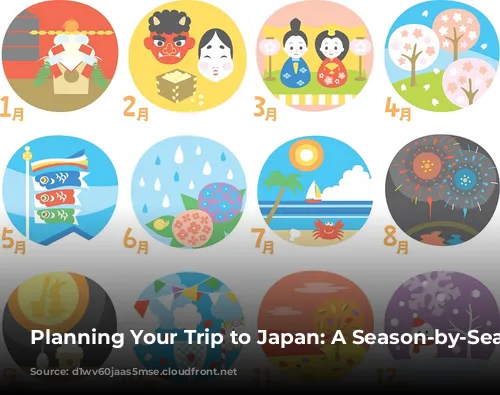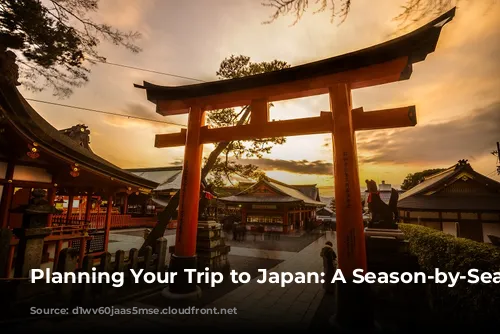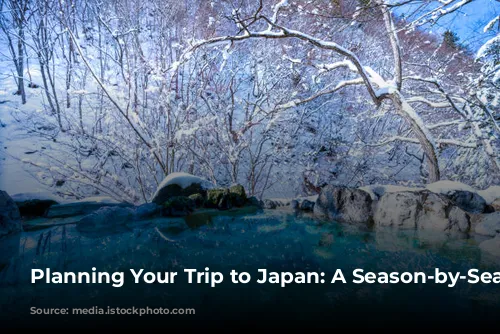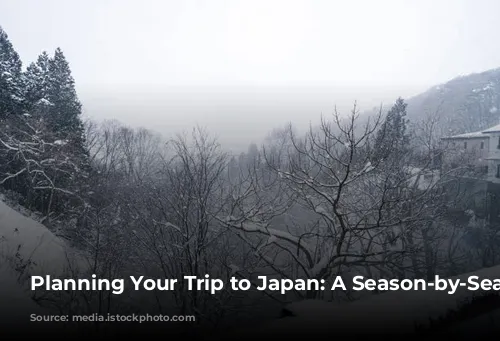Let’s talk about Japan! This beautiful country offers something for everyone, from bustling cities to serene mountains. But when is the best time to visit? The answer depends on your interests and what you hope to experience. Whether you want to indulge in craft beers, witness the stunning cherry blossoms, or explore national parks, knowing the weather in Japan can help you make the most of your trip.
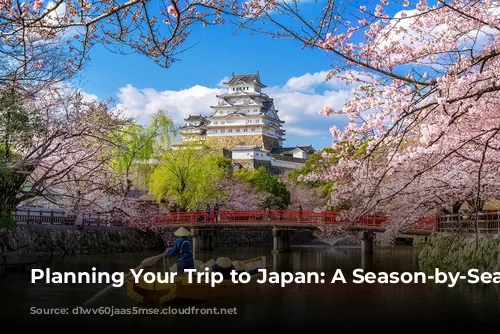
Weather in Tokyo: A Month-by-Month Breakdown
To understand the weather in Japan, we’ll focus on Tokyo, a popular tourist destination. While the weather varies across the country, Tokyo serves as a good starting point. You can easily reach other regions from Tokyo using the Japan Rail Pass, allowing you to enjoy different climates and experiences.
January in Tokyo is typically the coldest month, with temperatures dipping below 36°F (2°C). Expect some rain, sunshine, and light breezes. Bring your warmest clothes! A coat, gloves, hat, warm pants, and sweaters are essential.
February brings similar weather to January, with temperatures between 35°F (2°C) and 48°F (9°C). While the snow starts to clear around mid-February, you can expect more rain than in January. Pack layers and prepare for chilly winds.
March marks the beginning of warming temperatures in Tokyo. You can expect an average temperature increase of 8°F (4°C) from February. While there’s an increase in cloud cover, sunshine also becomes more frequent. Layer your clothing as mornings and evenings can still be chilly.
April brings even warmer temperatures, with an average of 57°F (14°C) and highs reaching 62°F (17°C). While it’s the third sunniest month, it’s also common to have overcast skies. Prepare for afternoon showers and pack a raincoat.
May brings summer-like weather to Tokyo. Temperatures rarely drop below 61°F (16°C) and can reach 81°F (27°C). Cloud cover decreases, and sunshine increases. Enjoy pleasant weather, but don’t forget your umbrella. May is often one of the wettest months.
June marks the start of high heat and humidity in Tokyo. Expect temperatures between 65°F (18°C) and 88°F (31°C). Tsuyu (the rainy season) brings frequent showers. Pack quick-drying clothing and keep a rain poncho handy.
July is still under the influence of the rainy season, with high temperatures and moderate rainfall. Although it’s not as rainy as June, it’s a good idea to bring your rain gear. Temperatures can soar as high as 93°F (34°C).
August marks the end of summer in Tokyo, but the humidity remains high. Temperatures stay in the 80s (°F) and you can expect clear skies and plenty of sunshine with occasional showers. Prepare for warm weather and enjoy the sunshine!
September sees a slight decline in temperatures, but the weather remains warm. Expect showers throughout the month. September marks the beginning of fall in Japan. Days become shorter, and you’ll need to pack for both warm and cold weather.
October brings cooler temperatures, with the days becoming increasingly chilly as the month progresses. Expect decreasing sunshine and humidity. The temperature drops into the 60s (°F) during the day and the 50s (°F) at night. Start packing warm clothes!
November is welcomed by the warm colors of fall and continued temperature drops. Temperatures average in the mid to lower 50s (°F). Precipitation decreases significantly, and days become shorter. You’ll need warm clothing for your travels in November.
December marks the beginning of the winter season in Tokyo. Temperatures drop to an average of 45°F (7°C) and there’s a minimal amount of rain. Pack a coat for warmth as there’s a possibility of snow.
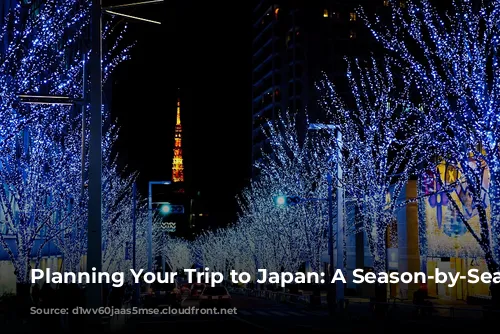
Japan’s Seasons: Beyond the Weather
Beyond the weather, Japan’s seasons are defined by unique events and activities.
Spring (March, April, and May) brings the famous Cherry Blossom Festival, as temperatures rise and plants begin to bloom. This period is often busy with tourists. April also marks the end of the ski season in Japan.
Summer (June, July, and August) is the perfect time for rock climbing and hiking in Japan’s stunning mountains. The warm weather and sunshine also make it ideal for exploring the country. Summer festivals like Odon, Sanno Festival, and Hydrangea Festival add to the vibrant atmosphere.
Fall (September, October, and November) offers cooler weather and stunning fall foliage. This season is less crowded, making it a great time for sightseeing and relaxation. Events like the Meguro Sanma Festival, Tokyo International Film Festival, and Cheese Festa are highlights of the season.
Winter (December, January, and February) brings cold weather and snowfall. This is the perfect time for skiing and snowboarding, and you can warm up with a visit to a Japanese onsen. While winter is a quiet season for tourism, the period between December 29th and January 10th sees a surge in holiday activities.
Remember: The weather and events can vary greatly across Japan, so be sure to research the specific region you’re visiting. To stay updated on the forecast and local conditions, consider renting a portable Wi-Fi router.
With careful planning, you can enjoy all the wonders of Japan, no matter the season!
